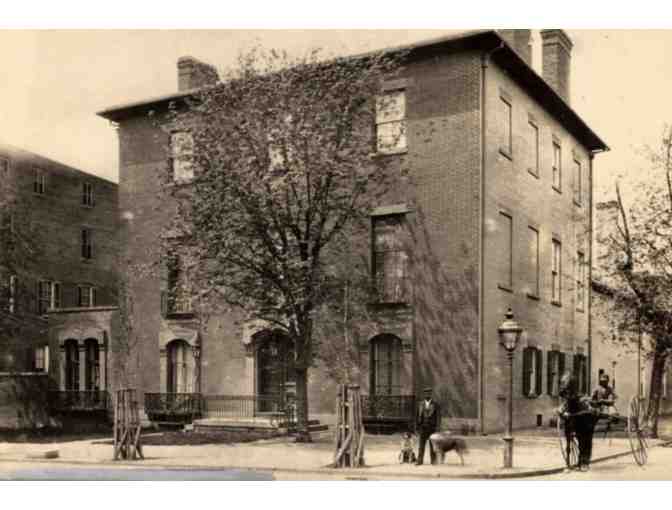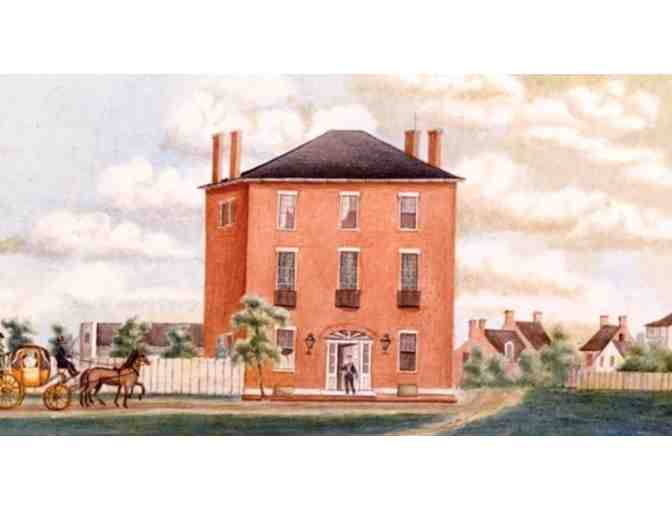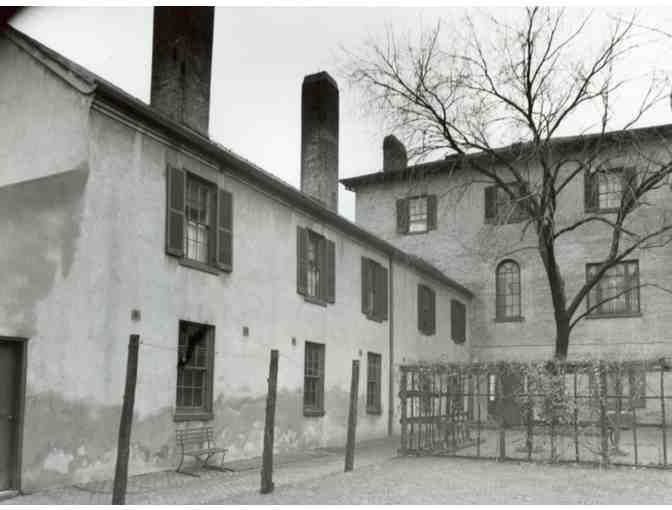Historical Tours
Tour of the Decatur House- White House Historical Association And James Hoban Book
- Item Number
- 213
- Estimated Value
- Priceless
- Sold
- 175 USD to pw1471351
- Number of Bids
- 1 - Bid History
Item Description
The White House Historical Association has generously donated a 6-8 person tour of the Decatur House (located in Washington, D.C.) - and the fascinating: JAMES HOBAN: DESIGNER AND BUILDER OF THE WHITE HOUSE book is included, $50 value!
The Historic Decatur House: When Commodore Stephen Decatur, Jr., and his wife, Susan, moved to the new federal city in 1816, they purchased land on the northwest corner of the President’s Park (today's Lafayette Square) with the prize money Decatur was awarded for his naval conquests in the War of 1812. The Decaturs commissioned Benjamin Henry Latrobe, America’s first professional architect and engineer, to design a home “fit for entertaining.” In Washington, Latrobe also designed St. John’s Episcopal Church (better known as the President’s Parish) and parts of the White House.
Built in 1818-1819, the Decaturs' home was the first private residence in the White House neighborhood. Thereafter known as Decatur House, it was a nearly square three-story town house constructed with red brick in the austere Federal fashion of the day. In 1819, the Decaturs moved in with high expectations for the Capital City as well as their own social position. Already a celebrity from his conquests in the Barbary Wars and the War of 1812, Stephen Decatur became one of Washington’s most celebrated figures, and the couple advanced their position by throwing a number of lavish parties in their new house. Unfortunately, the couple only occupied the house for a mere fourteen months as Decatur was mortally wounded in a duel against Commodore James Barron on March 22, 1820.
James Hoban: Designer and Builder of the White House:
When considering the design of the President’s House yet to be built in the emerging Federal City of Washington, President George Washington asked after a young Irish builder he had learned of while visiting in Charleston, South Carolina. Soon James Hoban appeared in Washington’s Philadelphia office with his credentials. By 1792, Hoban was at work on the building site, having won the competition for the design of the President’s House. Washington had placed him in charge of the entire project, with all carpentry, stonemasonry, and brickwork under his supervision. The resulting structure, accomplished in time for President John Adams to take residence in November 1800, fulfilled Washington’s vision and is today one of the most recognizable landmarks in the world. Yet of the millions of people who know the White House are likely to find Hoban’s work more memorable than his name. With this anthology, the world’s most knowledgeable scholars on James Hoban introduce us to him, presenting the story of his life, influences, and work. The essays are followed by an illustrated catalog of nearly 100 images of historic Dublin, Irish Country Houses, the White House, and sites known to James Hoban in America. This is the second book in a series on the design and construction of the White House published but the White House Historical Association; it follows A White House of Stone: The First Ideal in American Architecture, which focused on the work of the Scottish stonemasons. The third book in the series will focus on the enslaved people who built the White House.
Featured essays include:
"James Hoban: Designer and Builder of the White House," the story of Hoban's youth in Ireland, his journey to America, and how he came to be selected to build the White House, by the late American historian, Dr. William Seale.
"The Building Line in Ireland," which focuses on the influences of Irish architecture known to Hoban in his youth, by Merlo Kelly, a Design Fellow in the School of Architecture, University College Dublin, and Conservation Architect.
"Eighteenth-Century Irish Landscape Design and Its Translation to America by James Hoban," by Finola O’Kane, professor of architecture at University College Dublin.
"Life as Lived in Irish Country Houses: Desart Court and Leinster House," by Christopher Moran, Chairman of Co-operation Ireland.
"James Hoban and George Washington Devise the President’s House," by Brian O’Connell of O’Connell Mahon Architects in Dublin.
"James Hoban’s 1792 Designs for the President’s House" by Andrew McCarthy, independent historian and scholar of architectural history.
"Building the President’s House with Enslaved Labor: James Hoban and Slavery," by Dr. Matthew Costello, Vice President of the David M. Rubenstein National Center for White House History.
"James Hoban and the Early Roman Catholic Church in the Federal City of Washington," by Kristen Hunter Mason, Senior Editorial and Production Manager at the White House Historical Association.
About the Author: Stewart D. McLaurin has served as president of the White House Historical Association since 2014. He leads the Association’s nonprofit and nonpartisan mission to support conservation and preservation at the White House with nongovernment funding. Under his leadership, the Association has expanded greatly in mission, reach, and impact; fund-raising results; educational public programming and award-winning publications that teach the story of White House history; and related retail offerings inspired by history. For more than thirty-five years, McLaurin has held leadership roles with national nonprofit and higher education organizations such as the American Red Cross, Georgetown University, and the Ronald Reagan Presidential Foundation.
Constituting America stores data...
Your support matters, so Constituting America would like to use your information to keep in touch about things that may matter to you. If you choose to hear from Constituting America, we may contact you in the future about our ongoing efforts.
Your privacy is important to us, so Constituting America will keep your personal data secure and Constituting America will not use it for marketing communications which you have not agreed to receive. At any time, you may withdraw consent by emailing Privacy@frontstream.com or by contacting our Privacy Officer. Please see our Privacy Policy found here PrivacyPolicy.



